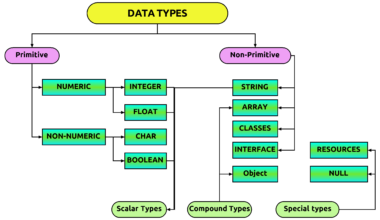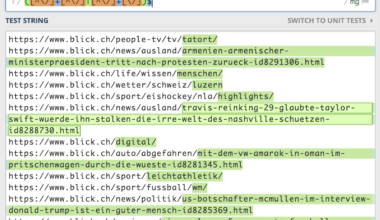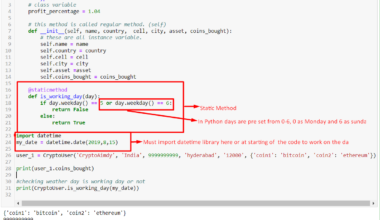Introduction: Understanding Python Sets
As a Python developer, you might have come across the term “Sets”. Sets are an essential data type in Python that allows you to store a collection of unique elements. In other words, a set is a collection of unordered and unique elements that can be of any data type such as numbers, strings or even other sets.
To create a set in Python, you can use the set() constructor or enclose a sequence of elements within curly brackets {} separated by a comma. Here’s an example:
my_set = set()
my_set = {1, 2, 3, 4, 5}Sets are similar to lists and tuples, but they differ in their unique property. In a list or tuple, you can have duplicate elements, but in a set, each element must be unique.
One of the significant advantages of using sets is their speed when performing operations on unique collections. When you’re dealing with a large dataset, sets can prove to be an efficient and effective tool to work with.
In the next section, we’ll discuss some of the advantages of using Python sets in your code.
Advantages of Using Python Sets
Python sets come with several advantages that make them a powerful and essential tool for unique collections. In this section, we’ll discuss some of the advantages that make Python sets stand out among other data structures.
1. Sets allow for fast membership testing
One of the most significant advantages of using sets is their ability to perform membership testing quickly. Since sets only contain unique elements, Python can use hashing algorithms to search for elements effectively. This makes sets ideal for applications such as filtering out duplicates or identifying unique values in a large dataset.
Here’s an example that demonstrates how sets can be used for membership testing:
my_set = {1, 2, 3, 4, 5}
if 3 in my_set:
print("3 is in the set")
2. Sets can perform mathematical operations
Python sets come with built-in methods for performing mathematical operations such as union, intersection, and difference. These operations can be useful when working with data that requires aggregation or comparison.
Here’s an example that demonstrates how sets can perform mathematical operations:
set1 = {1, 2, 3, 4, 5}
set2 = {4, 5, 6, 7, 8}
set3 = set1.union(set2)
print(set3)
This code will output {1, 2, 3, 4, 5, 6, 7, 8}, which is the union of set1 and set2.
3. Sets are mutable
Unlike tuples, Python sets are mutable, which means you can add or remove elements from them. This makes sets an excellent tool for dynamic collections that need to change frequently.
Here’s an example that demonstrates how sets are mutable:
my_set = {1, 2, 3, 4, 5}
my_set.add(6)
print(my_set)
This code will output {1, 2, 3, 4, 5, 6}, which is the original set with the element 6 added to it.
4. Sets can be used to remove duplicates from a list
Since sets only contain unique elements, they can be used to remove duplicates from a list. This can be achieved by converting the list to a set,
Set Operations and Methods in Python
Python sets come with built-in methods and operations that allow you to perform various tasks on your sets. In this section, we’ll discuss some of the essential methods and operations that you need to know when working with sets.
1. Adding Elements to a Set
To add an element to a set, you can use the add() method. Here’s an example:
my_set = {1, 2, 3}
my_set.add(4)
print(my_set)
This will output {1, 2, 3, 4}, which is the original set with the element 4 added to it.
2. Removing Elements from a Set
To remove an element from a set, you can use the remove() method. Here’s an example:
my_set = {1, 2, 3, 4}
my_set.remove(3)
print(my_set)
This will output {1, 2, 4}, which is the original set with the element 3 removed from it.
3. Set Operations – Union
The union() method allows you to combine two or more sets and return a new set with all the unique elements. Here’s an example:
set1 = {1, 2, 3}
set2 = {3, 4, 5}
set3 = set1.union(set2)
print(set3)
This will output {1, 2, 3, 4, 5}, which is the union of set1 and set2.
4. Set Operations – Intersection
The intersection() method allows you to find the common elements between two or more sets and return a new set. Here’s an example:
set1 = {1, 2, 3}
set2 = {3, 4, 5}
set3 = set1.intersection(set2)
print(set3)
This will output {3}, which is the intersection of set1 and set2.
5. Set Operations – Difference
The difference() method allows you to find the elements that are in one set but not the other and return a new set. Here’s an example:
set1 = {1, 2,
Applications of Python Sets in Data Analysis
Python sets are incredibly useful for data analysis since they can help you perform crucial operations, including filtering, intersection, and union. Here are some examples of how you can use sets in data analysis:
1. Removing duplicates from a dataset
One of the most common uses of sets in data analysis is to remove duplicate entries from a dataset. Suppose you have a list of customer emails, and you want to remove any duplicates. In that case, you can easily convert the list to a set to remove the duplicates and then convert the set back to a list.
Here is an example of how you can use sets to remove duplicates from a list:
emails = ["john@example.com", "jane@example.com", "jim@example.com", "jane@example.com", "john@example.com"] unique_emails = set(emails) print(list(unique_emails))
This code will output:
['jane@example.com', 'john@example.com', 'jim@example.com']
2. Finding unique elements in a dataset
Sets are also useful for identifying unique elements in a dataset. Suppose you have two lists of customer emails, and you want to find the unique email addresses across both lists. In that case, you can use the union() method to combine the two sets and get the unique values.
Here is an example of how you can use sets to find unique elements in a dataset:
emails1 = ["john@example.com", "jane@example.com", "jim@example.com"] emails2 = ["jane@example.com", "john@example.com", "jessica@example.com"] unique_emails = set(emails1).union(set(emails2)) print(list(unique_emails))
This code will output:
['jane@example.com', 'john@example.com', 'jim@example.com', 'jessica@example.com']
3. Filtering data based on certain criteria
Sets are also useful for filtering data based on certain criteria. Suppose you have a list of customer emails and you want to filter out any emails that contain the word “spam.” In that case, you can use a set comprehension to create a new set that only contains the emails that do not contain the word “spam.”
Here is an example of how you can use sets to filter data based on certain criteria
Final Thought: Why Python Sets are Essential for Unique Collections
In conclusion, Python sets are an essential tool for unique collections. Sets offer advantages such as fast membership testing, mathematical operations, mutability, and removing duplicates from a list. Sets also come with built-in methods and operations that allow you to perform various tasks on your sets.
Moreover, sets are incredibly useful in data analysis. Sets can help you perform crucial operations, including filtering, intersection, and union. Sets can help you remove duplicates from a dataset, find unique elements in a dataset, and filter data based on certain criteria.
In summary, Python sets are a powerful tool that can simplify your code and improve its efficiency. Whenever you’re working with unique collections of data, consider using sets to take advantage of their unique properties and built-in methods. With Python sets, you can easily manipulate and analyze data, making them an essential tool for any Python developer.






















